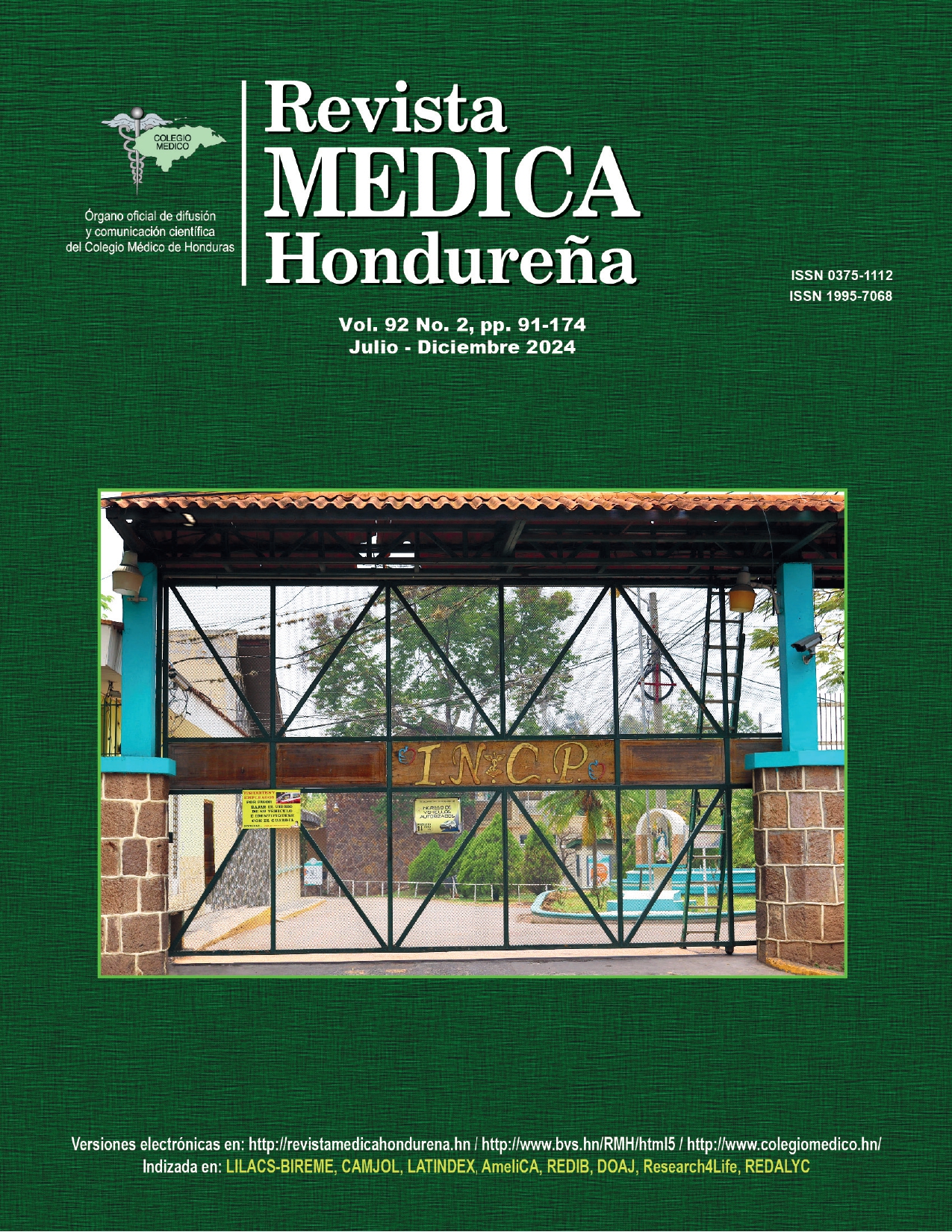Prevalence and factors associated with dermatosis in the adult population of Honduras, 2017-2018
DOI:
https://doi.org/10.5377/rmh.v92i2.18920Keywords:
Associated factors, Dermatoses, PrevalenceAbstract
Introduction: In dermatology, there are more than 2,000 entities, some of which affect an individual of any age group at a given moment without distinction of race or sex. The last report in The Global Burden of Disease (2014) revealed that the prevalence of dermatoses in general ranged between 30% and 70%. Objective: Determine the prevalence and factors associated with dermatoses in adults ≥ 18 years in areas of influence of the Medical Doctors in Social Service of the National Autonomous University of Honduras (UNAH), November 2017–November 2018. Methods: Transversal descriptive study with association analysis, carried out in the 18 departments of Honduras, included the adult population ≥ 18 years old in the geographical areas of influence of 254 Doctors in Social Service. The sampling was multistage random, assigning each one 50 ± 2 adults over 18 years of age, total sample of 12,775 adults. An interview was applied, performing univariate and bivariate analysis, prevalence ratio and 95% CI, with values of p<0.05. Results: A prevalence of dermatoses of 43.4% was found. Among the associated factors: female sex (PR=1.03, CI= 95% 1.01-1.06, P=0.00026), comorbidities (PR=1.53, CI=1.46- 1.61, P=0.00000), hours of sun exposure 9am to 4pm (PR=1.07, CI=1.04-1.11, P=0.00000). Discussion: There is an association between the presence of comorbidities and dermatoses, and it is established that solar exposure is a risk factor associated with the presence of dermatoses in the studied population.
Downloads
210
Downloads
Published
How to Cite
Issue
Section
License
Copyright (c) 2024 Autores

This work is licensed under a Creative Commons Attribution 4.0 International License.




